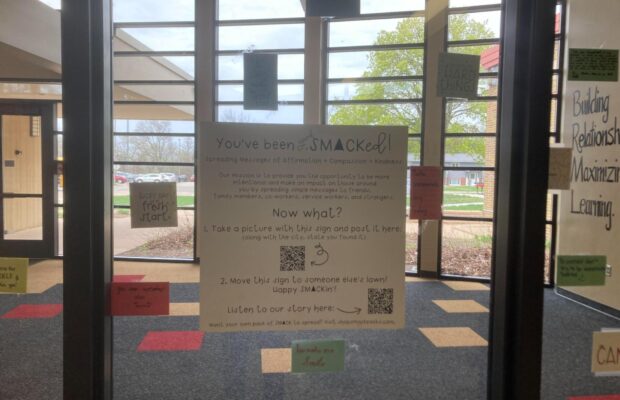Rocket club preparing for next steps with NASA project
Since the rocket club’s previous success with the NASA Student Launch, nothing less than success is still happening.
Their first meeting with NASA was on Nov. 9, and NASA prompted the students to go into more detail with their ideas and continue to articulate them, as well as make a few minor modifications. The conference is called the Preliminary Design Review, where NASA was enlightened with the high school’s 65-page document packed with details about their rocket and design and other important information.
NASA was very interested in the team’s idea and called for another meeting called a DELTA where they could ask the team more questions and get more specific information.
The team has decided on most of their updates and what they plan to do for the rocket as time for the flight of their 50 percent scale rocket runs out. “The team has decided not to install landing legs on the booster portion of their full-scale rocket, but they do intend to use their subscale rocket as a platform to do independent testing of these landing legs as a side project later this year and this summer” Zeb Nicholson, rocket club adviser, said.
To be able to have a beneficial Critical Design Review conference with NASA again, the team has to make an identical rocket that will be half the size of their real rocket before Jan. 3 when their data is due. “NASA requires us to fly this rocket as a ‘proof of concept,’ which shows that our design should work full scale and helps us to understand if we see any major problems with our design,” Sean Radke, leader of payload design and construction for the Student Launch, said.
About a week after Jan. 3, they will have another meeting with NASA, which will be the final step before being able to build their full scale rocket and make final modifications. The big day for their final flight will be April 20, through April 23, in Huntsville, Ala.
“The rocket will have three GoPro Hero 9’s in it, with a 4k video recorded from each GoPro at 120 degrees apart from each other to create a full 360 video to be stitched together afterward. The video can then be converted into VR for an immersive experience for anyone who wants to have one,” Radke said. Radke and the team also expect an altitude of 3,400 feet.
Nicholson said that the key to their astonishing success is the team’s teamwork. “Without each student pulling their own weight and contributing to the great good of the team, we wouldn’t be successful.” The club is divided into many different groups, such as outreach for the community to promote the club, payload design, safety and fundraising, which all work together to reach their big goals.
“The team has had setbacks like any other team might experience in a big project like NASA Student Launch, but they have worked tirelessly to overcome these obstacles and still be on track for success,” Nicholson said. “When I talk to my students about tackling a project of this scale though, I keep asking them ‘How do you eat an elephant?’ And the answer is ‘One bite at a time.’ I remind them that looking at the project as a whole can be overwhelming, but taking it piece by piece and accomplishing smaller goals is what will get them to the finish line in Huntsville, Ala., in April.”
Although this team is looking success in the eyes, the club reminds students that they are a family and would love for anyone to join. “The rocket club isn’t just for NASA, but also as a group of kids as a learning community to build rockets of any size with anyone interested in the school and in the community,” Radke said.

![]()

![]()
![]()









You must be logged in to post a comment Login